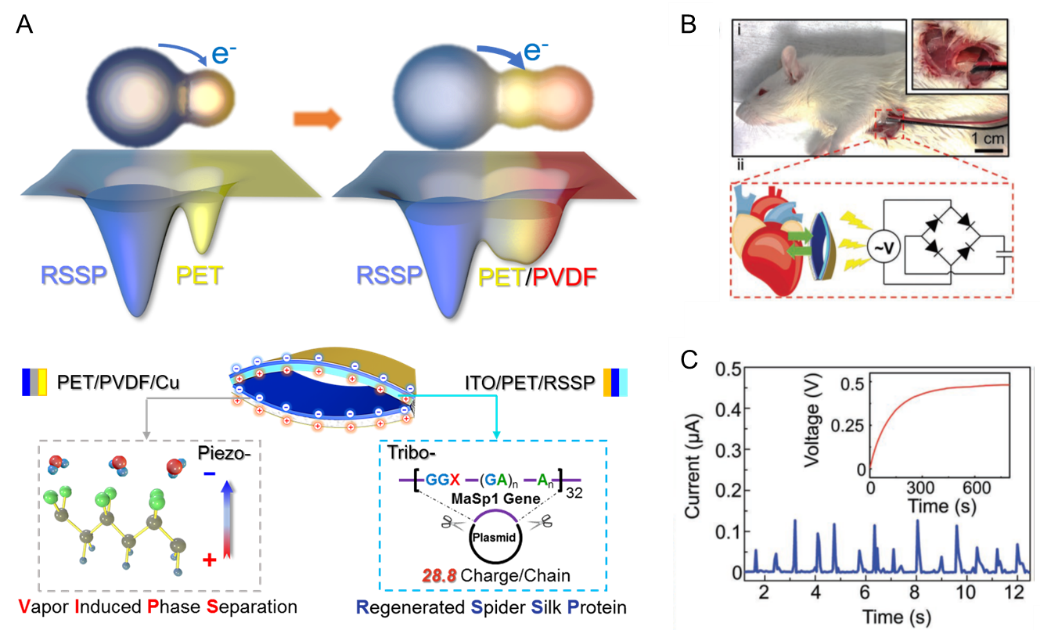Self-matched Nanogenerator – A Step Closer to High Efficient Self-powered Wearable/Implantable Sensors
Date:11-03-2020 | 【Print】 【close】
Figure 1. This work was selected as the cover article of Advanced Materials (Volume32, Issue10, https://doi.org/10.1002/adma.202070072).
Specifically, the PVDF generates a strong piezo-potential that modifies the surface potential of a middle matching layer (PET) to match the electron-transfer direction of the spider silk during triboelectrification (Figure 2). A “vapor-induced phase-separation” process is developed to enhance the piezoelectric performance in a facile and “green” roll-to-roll manufacturing fashion. The devices show exceptional output performance and energy transformation efficiency among currently existing energy harvesters of similar sizes and exhibit the potential for large-scale fabrication and various implantable/wearable applications. The self-matching theory and corresponding device configuration presented among this work will greatly promote the development of green energy and self-powered sensor systems, which gain more attention in the future.

Figure 2. The self-matching theory, device configuration and demonstration of implantable organ monitors as well as bioenergy harvesters. (A) An electron-cloud-potential-well model proposed to explain the charge transfer between spider silk and PET with/without PVDF. (B) i) Images of a TPNG located in the subdermal chest region at two different scales; ii) Schematic of the energy harvesting process and circuit as applied to collect energy from a beating rat heart. (C) Current signals of implanted device associated with the beating heart; inset shows the voltage developed across a capacitor storing charge from accumulated current signals from the beating heart.
This work was partially supported by the National Science and Technology Major Project from Minister of Science and Technology, China, the National Science Fund for Excellent Young Scholars, the National Natural Science Foundation of China, Shanghai Outstanding Academic Leaders Plan, and the State Scholarship Fund from China Scholarship Council. The authors thank Prof. Xiaoxia Xia from Shanghai Jiao Tong University for her great support.
